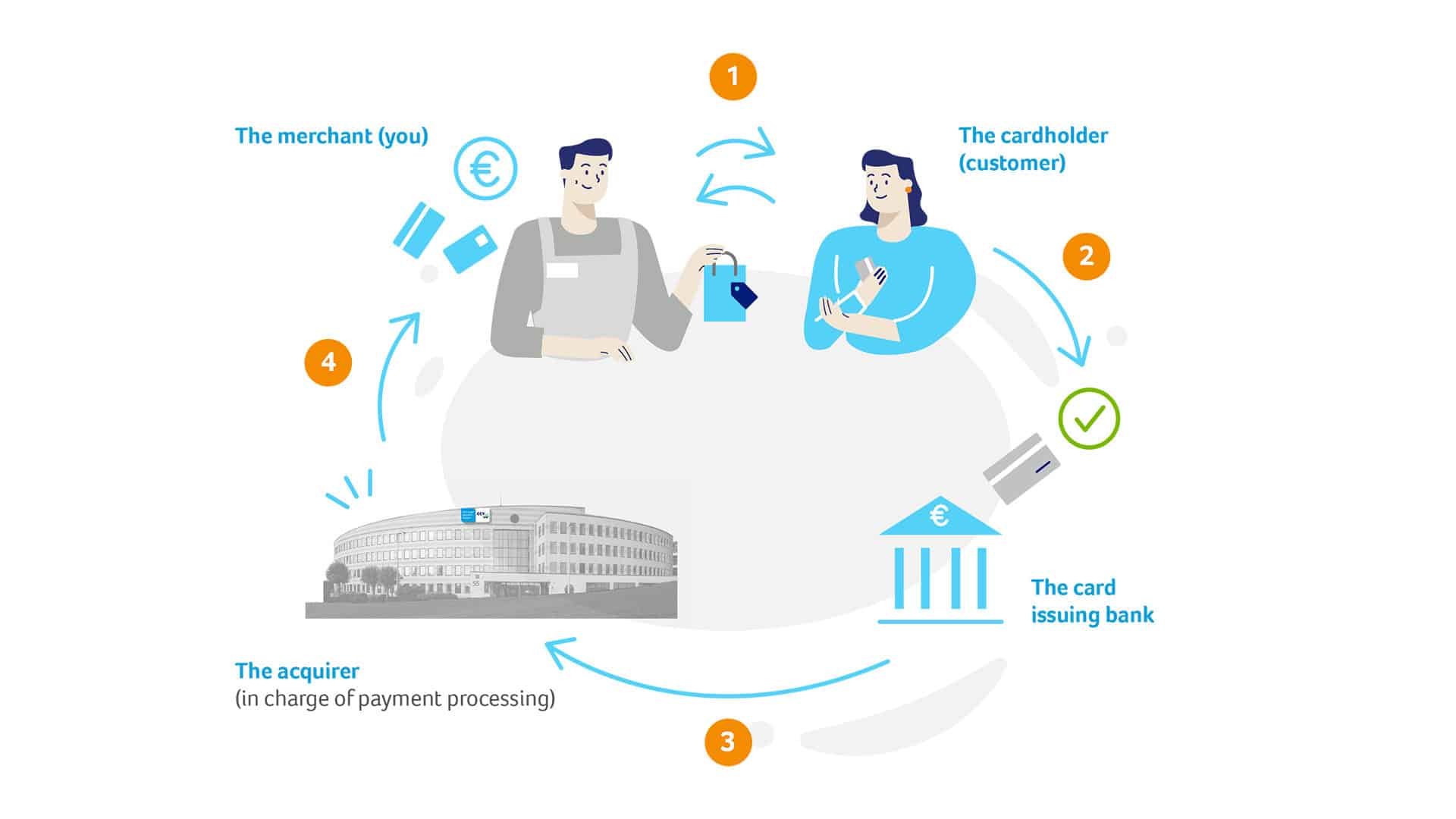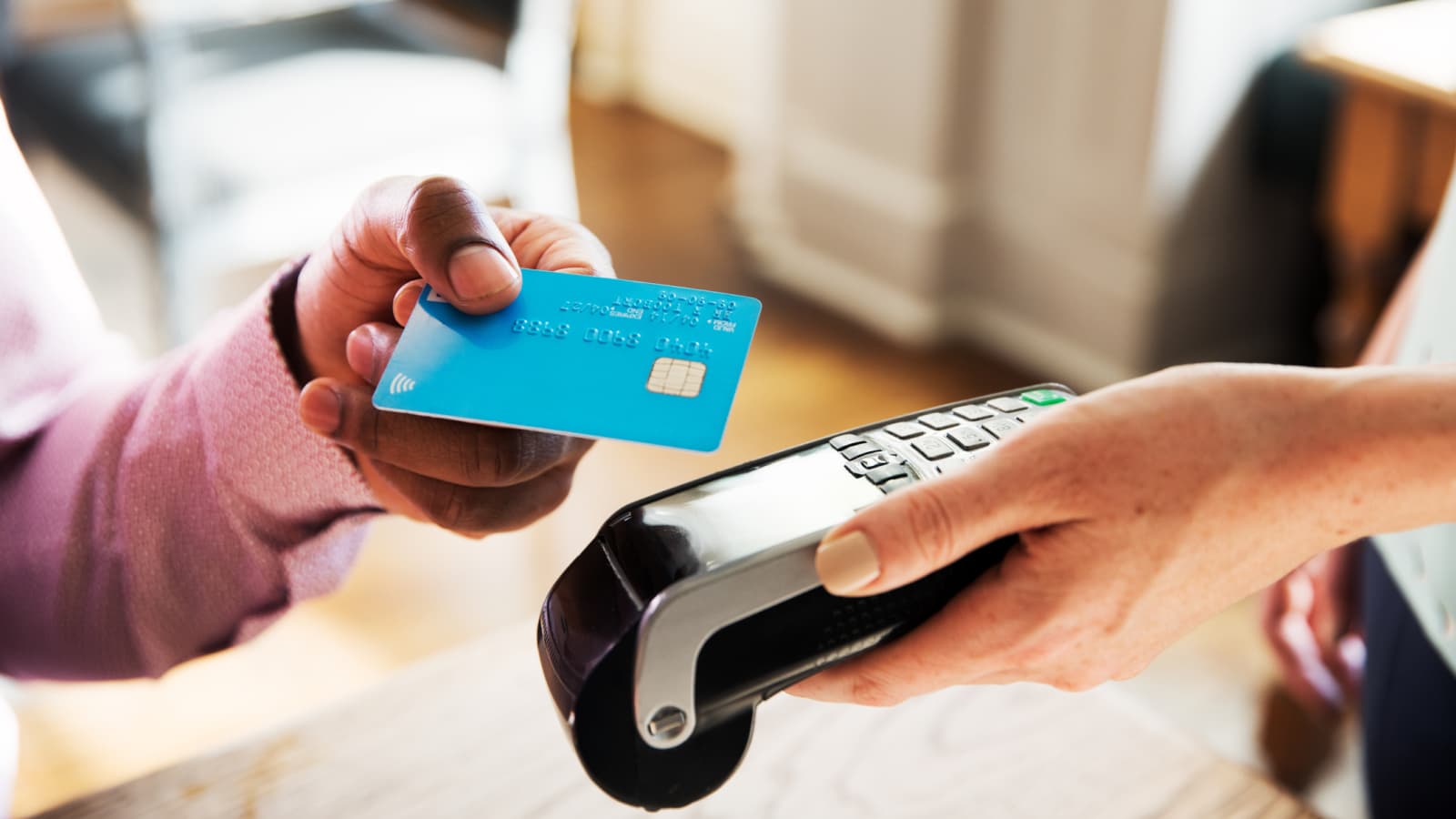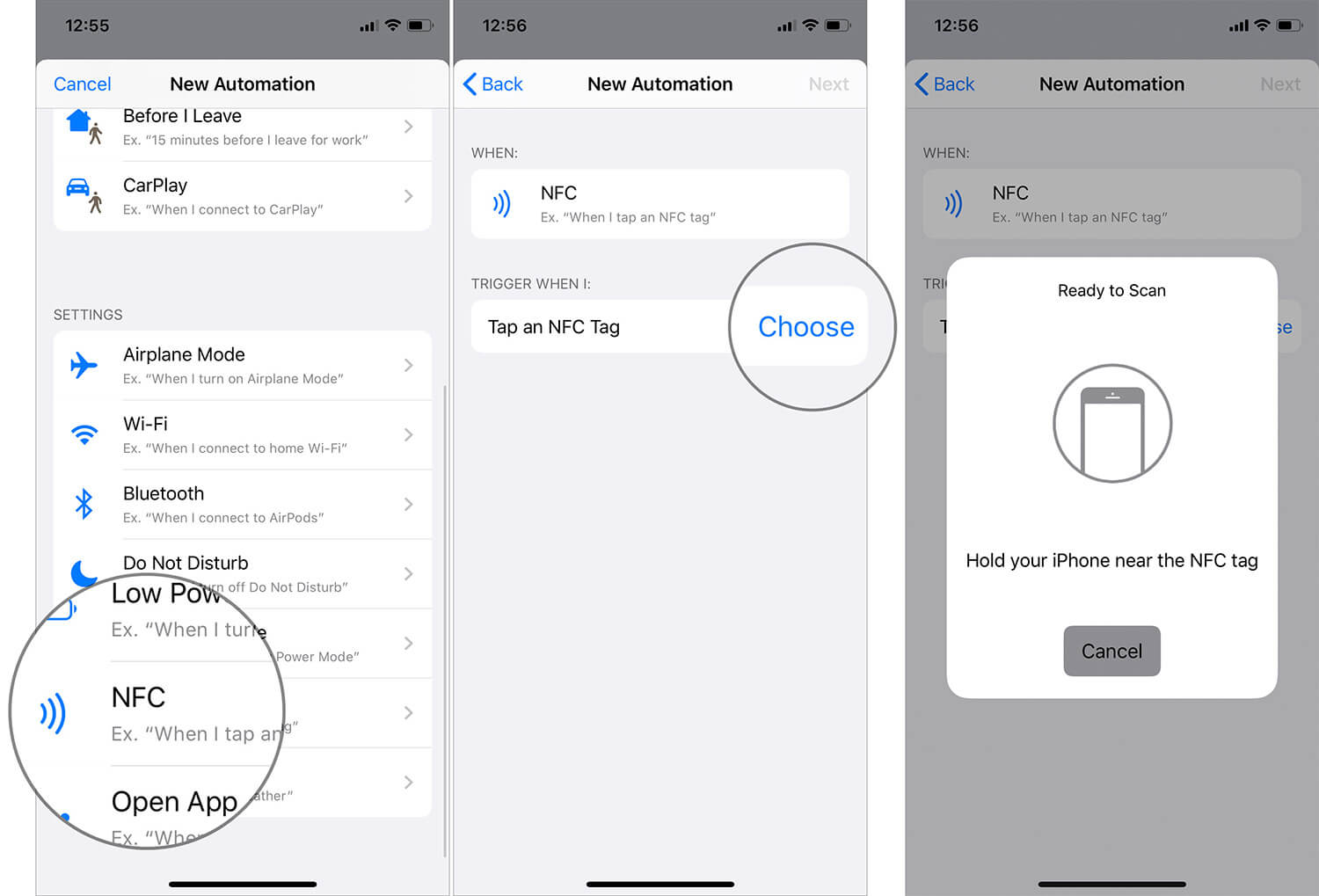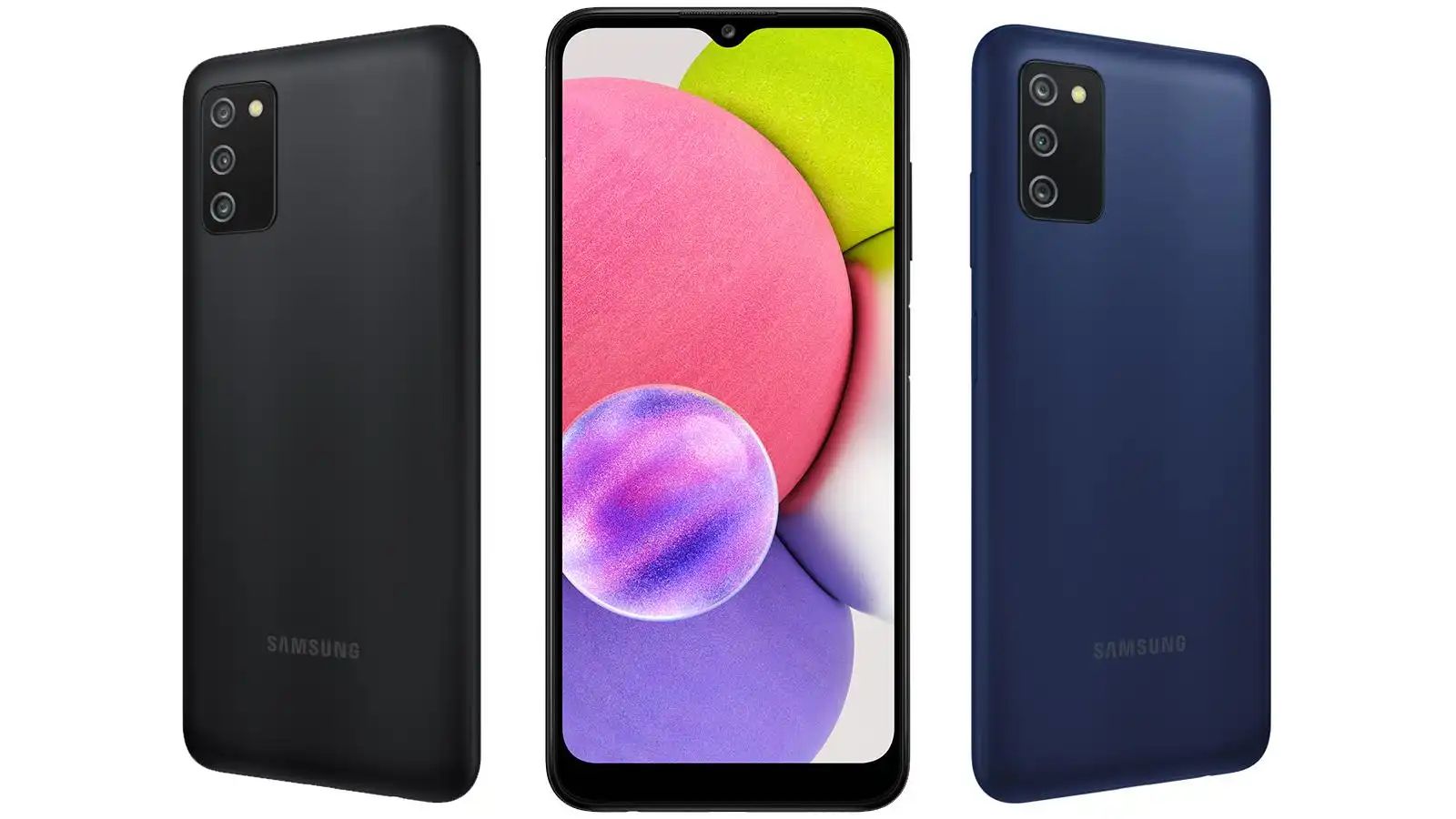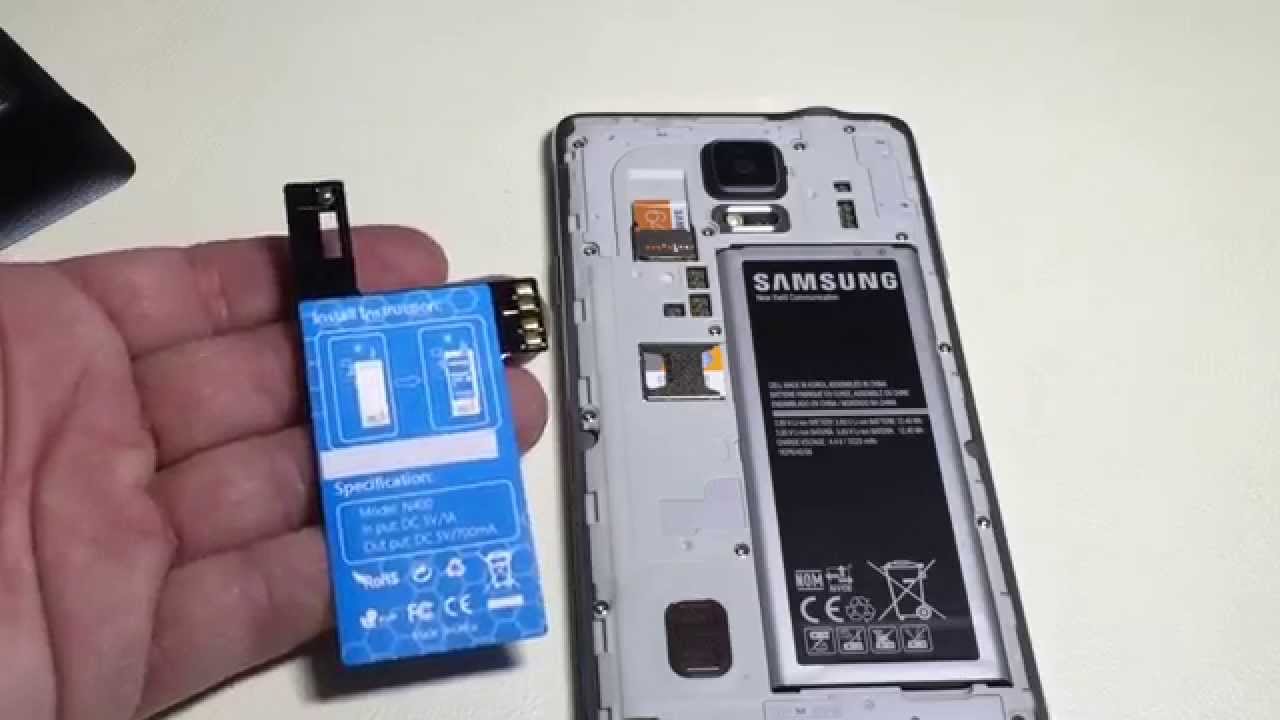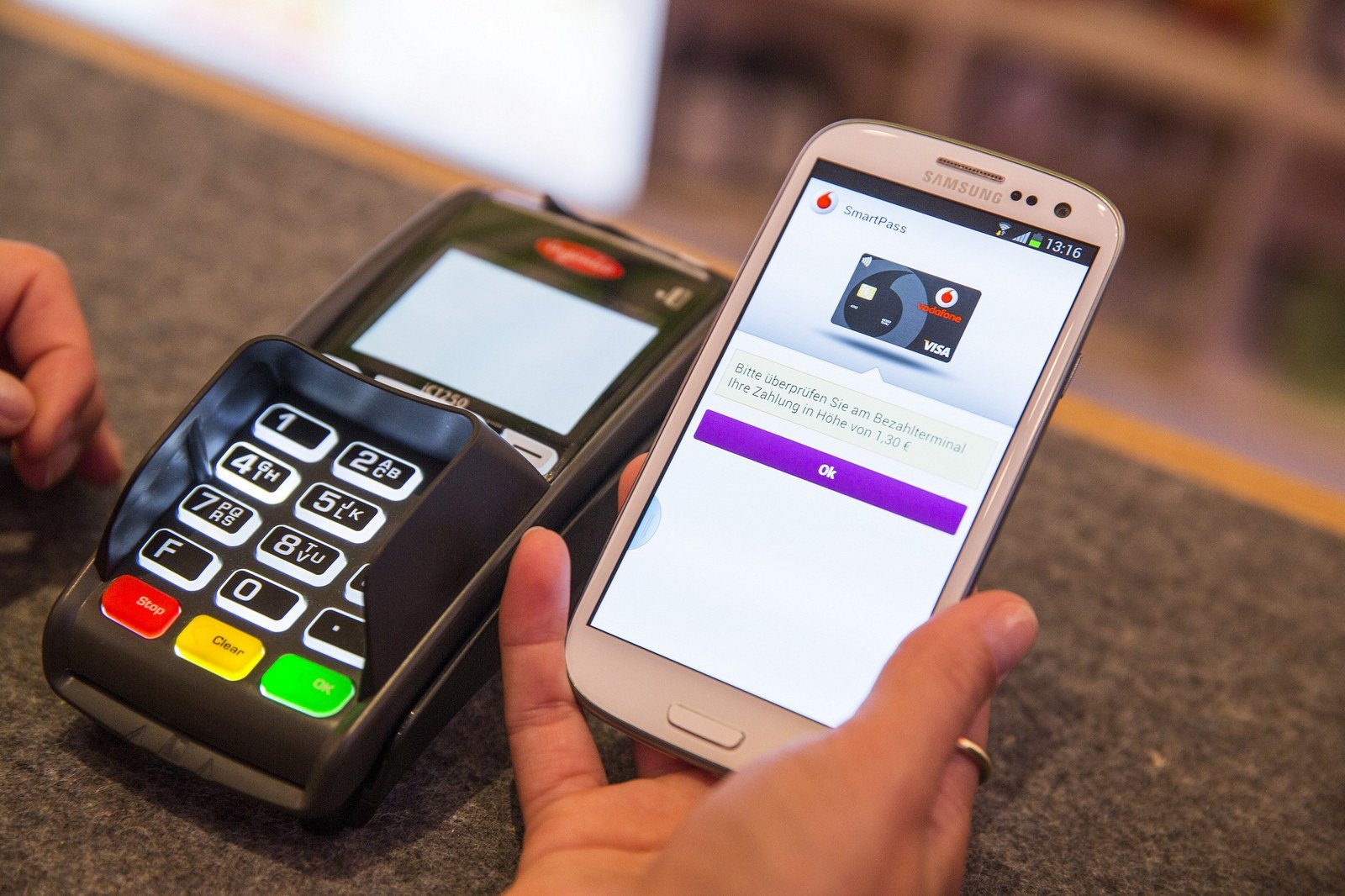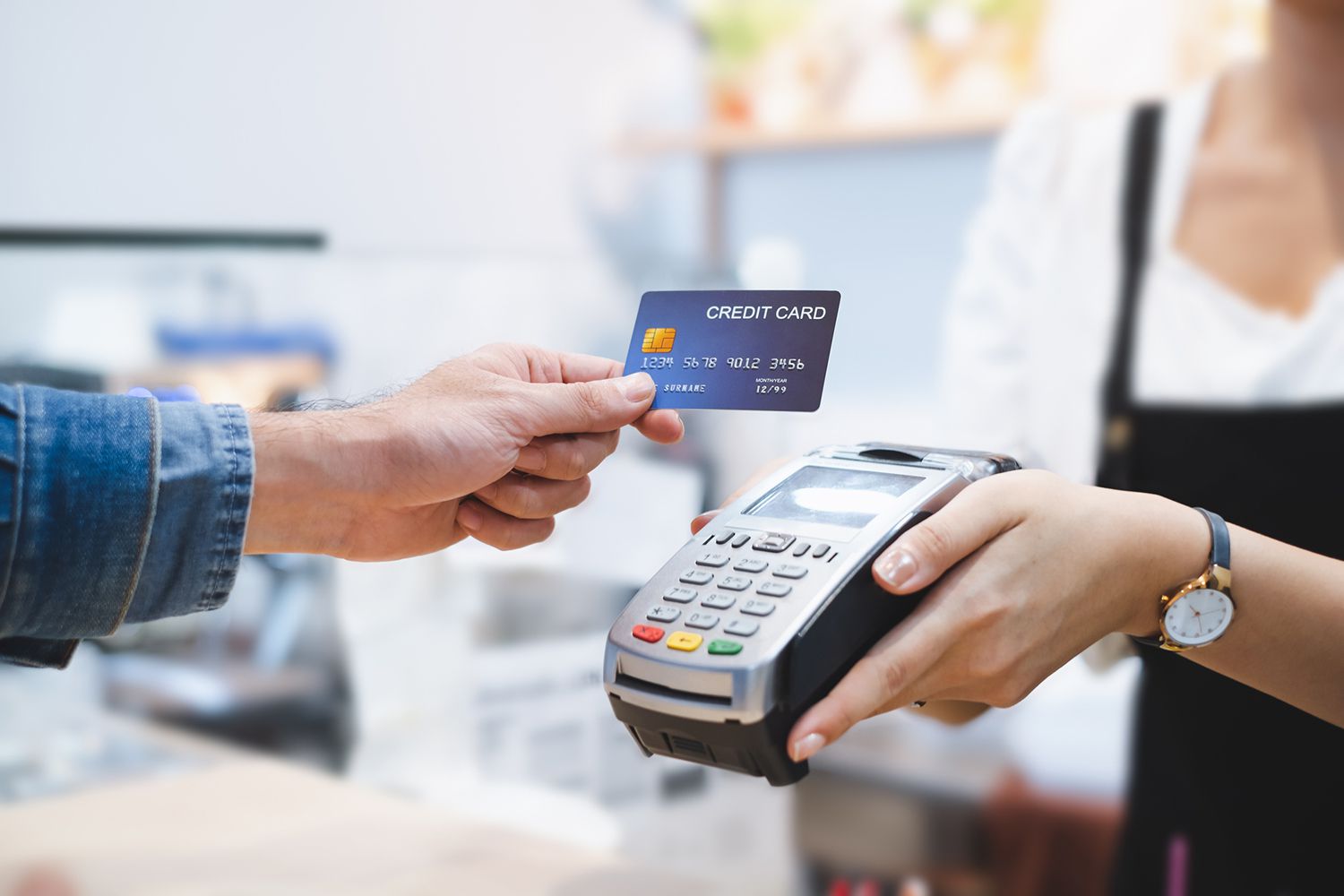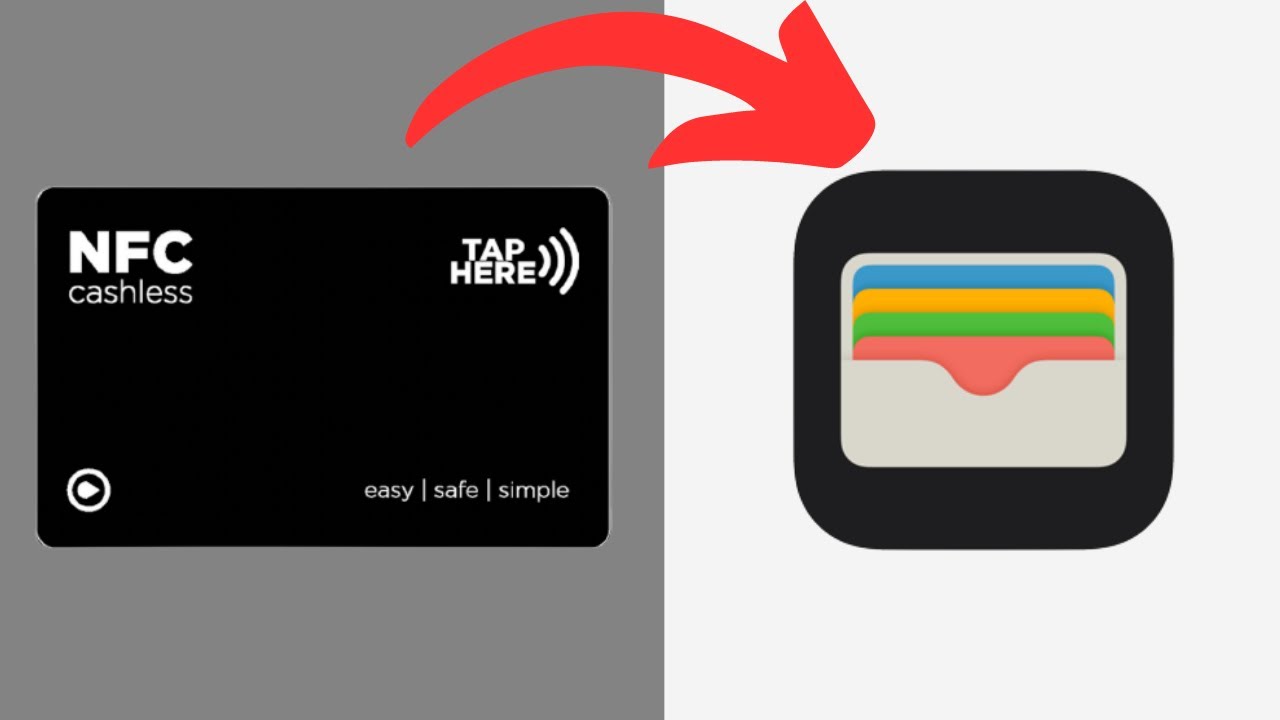Introduction
NFC, short for Near Field Communication, is a technology that enables wireless communication between devices within close proximity. It has gained popularity in recent years as a convenient and secure method of making payments. With just a tap, users can make purchases using their smartphones, smartwatches, or other NFC-enabled devices. In this article, we will explore how NFC payments work and the benefits they offer.
NFC technology utilizes electromagnetic fields to establish communication between two devices. It operates at a frequency of 13.56 MHz and allows for the exchange of data over short distances. NFC payments leverage this technology to facilitate contactless transactions, eliminating the need for physical cards or cash.
The process of making NFC payments involves several steps, starting from device compatibility and setting up the payment method to communicating with the payment terminal and confirming the transaction. Understanding these steps and the underlying technology is crucial to harnessing the full potential of NFC payments.
Before diving into the details, it’s important to note that NFC payments require both the payer’s device and the payment terminal to support NFC technology. Many modern smartphones, wearables, and even some credit cards are equipped with NFC capabilities, making them compatible with NFC payments.
Setting up a payment method for NFC transactions is typically done through a digital wallet or a mobile banking application. These platforms allow users to link their bank accounts, credit cards, or other payment sources to their NFC-enabled devices. Once the payment method is set up, users are ready to initiate NFC payments.
What is NFC?
Near Field Communication (NFC) is a short-range wireless technology that enables communication between devices within a range of a few centimeters. It operates on the principles of electromagnetic induction, allowing for secure and convenient data exchange between devices.
NFC technology is based on RFID (Radio Frequency Identification) technology, which uses radio waves to transmit information. However, NFC provides a more advanced and versatile solution compared to traditional RFID. NFC can both read and write data, enabling more interactive and dynamic communication between devices.
One of the key features of NFC is its simplicity and ease of use. Users can simply bring two NFC-enabled devices close together to establish a connection. This “tap and go” approach has revolutionized various aspects of our lives, including payments, ticketing, access control, and data sharing.
NFC technology is found in a wide range of devices, including smartphones, tablets, smartwatches, and even credit cards. This widespread adoption has made NFC payments increasingly popular and accessible to a large number of users worldwide.
In addition to payments, NFC has found application in various other domains. For example, it is commonly used for public transportation systems, allowing users to simply tap their NFC-enabled cards or smartphones on the ticket reader to pay for fares. NFC also enables simplified pairing between devices, making it quick and easy to connect devices such as Bluetooth headphones or speakers.
When it comes to security, NFC offers several layers of protection. First, the short-range nature of NFC communication ensures that it is difficult for unauthorized devices to eavesdrop on the communication. Additionally, NFC supports encryption and authentication protocols, providing secure channels for data transfer.
Overall, NFC technology has simplified and enhanced various aspects of our daily lives. Its versatility, convenience, and security make it an ideal solution for a wide range of applications. In the next sections, we will delve deeper into how NFC payments work and the benefits they offer.
How does NFC payments work?
NFC payments leverage the capabilities of NFC technology to enable secure and convenient contactless transactions between a payer’s device and a payment terminal. The process involves several steps, from device compatibility to transaction confirmation.
Step 1: Device compatibility: Both the payer’s device and the payment terminal must support NFC technology. Many modern smartphones, smartwatches, and even credit cards are equipped with NFC capabilities, making them compatible with NFC payments.
Step 2: Setting up payment method: Users need to link their bank accounts, credit cards, or other payment sources to their NFC-enabled device. This is typically done through a digital wallet or a mobile banking application. Once the payment method is set up, users are ready to initiate NFC payments.
Step 3: Initiating payment: To begin a transaction, the user simply needs to bring their NFC-enabled device within close proximity to the payment terminal. This can be done by tapping the device on the terminal or holding it near the contactless payment symbol. The payer’s device and the terminal establish a communication channel using NFC technology.
Step 4: Communicating with the payment terminal: Once the connection is established, the payer’s device sends the necessary payment information to the payment terminal. This includes details such as the transaction amount and the payer’s account information. The payment terminal securely transmits this information to the payment processor or the user’s bank for authorization.
Step 5: Transaction confirmation: Upon receiving authorization from the payment processor or the user’s bank, the payment terminal confirms the successful completion of the transaction. The payer’s device also receives a confirmation message, providing them with a proof of purchase. The transaction is completed without the need for physical cards or cash.
NFC payments offer several advantages over traditional payment methods. They are fast, convenient, and eliminate the need for physical contact or signatures. Additionally, NFC payments reduce the risk of card skimming or fraud, as the payment information is securely transmitted between the payer’s device and the payment terminal.
In the next section, we will explore the benefits of NFC payments and discuss some security considerations to keep in mind when using this technology.
Step 1: Device compatibility
Device compatibility is the first step in the process of making NFC payments. Both the payer’s device and the payment terminal must support NFC technology in order to establish communication and carry out contactless transactions.
Many modern smartphones, smartwatches, and even credit cards are equipped with NFC capabilities, making them compatible with NFC payments. These devices have built-in NFC chips that allow them to send and receive data over short distances. When it comes to smartphones, popular operating systems like Android and iOS have integrated NFC functionality into their devices, making NFC payments widely accessible to users.
The payment terminal, on the other hand, also needs to be equipped with NFC capabilities to accept NFC payments. NFC-enabled terminals are becoming increasingly common in retail stores, restaurants, and various other businesses. They have a contactless payment symbol, typically displayed as a wave or an NFC logo, indicating that they support NFC transactions.
For a successful NFC payment, it’s important to ensure that both the payer’s device and the payment terminal are compatible with NFC. This can be easily determined by checking the device’s specifications or looking for the contactless payment symbol on the payment terminal.
Ensuring device compatibility is essential because without it, NFC payments cannot be initiated or completed. If either the payer’s device or the payment terminal does not support NFC, alternative payment methods will need to be used, such as physical cards or cash.
It’s worth noting that the acceptance and adoption of NFC technology may vary in different regions and industries. While NFC payments are gaining popularity globally, it’s always a good idea to check the availability of NFC-enabled devices and payment terminals in your local area.
In the next section, we will explore the next step in making NFC payments – setting up the payment method.
Step 2: Setting up payment method
Once the payer’s device and the payment terminal are compatible with NFC technology, the next step in the process of making NFC payments is setting up the payment method. This involves linking the payer’s bank account, credit card, or other payment sources to their NFC-enabled device.
The payment method setup is typically done through a digital wallet or a mobile banking application. A digital wallet acts as a storage space for payment credentials and allows users to manage their payment sources securely. Examples of popular digital wallet platforms include Apple Pay, Google Pay, Samsung Pay, and various banking apps that offer NFC payment functionality.
To set up the payment method, users need to follow a few simple steps within the digital wallet or mobile banking application. They may be prompted to enter their payment card details, including the card number, expiration date, and the cardholder’s name. Additionally, some digital wallet platforms may require additional security measures such as verifying the card with a one-time password or fingerprint authentication.
Once the payment method is added to the digital wallet or mobile banking application, it becomes ready for use in NFC payments. Users can select their preferred payment method from the options available in the wallet when initiating a transaction.
It is worth mentioning that some digital wallet platforms also offer the option to store loyalty cards, coupons, and even event tickets. This adds further convenience to the NFC payment experience, as users can consolidate multiple cards and offers within their mobile device.
Setting up the payment method securely is of utmost importance. Users should ensure that they are using official and trusted digital wallet platforms and that their payment information is protected with strong passwords or biometric authentication.
By completing the setup of a payment method within a digital wallet or mobile banking application, users are ready to take the next step in using NFC payments – initiating a transaction. We will explore this step further in the next section.
Step 3: Initiating payment
Once the payment method is set up on the payer’s NFC-enabled device, they are ready to initiate an NFC payment. The process of initiating a payment involves bringing the device close to the payment terminal to establish a connection using NFC technology.
When making an NFC payment, the payer’s device and the payment terminal need to be within a short distance, usually a few centimeters. This proximity allows for the exchange of data without the need for physical contact between the devices. The payer can initiate the payment by tapping their device on the payment terminal or holding it near the contactless payment symbol.
Once the payer’s device is brought into proximity with the payment terminal, the NFC technology within the devices activates. The NFC chip embedded within the payer’s device generates an electromagnetic field that energizes the NFC chip within the payment terminal.
The devices then establish a communication channel, securely exchanging the necessary payment information. This includes details such as the transaction amount, the payer’s account information, and any additional security measures implemented by the payment service provider.
During the initiation of the payment, the payer’s device and the payment terminal exchange encrypted data to ensure the privacy and security of the transaction. This encryption protects against unauthorized interception or tampering of the payment information.
It’s important to note that NFC payments require the payer to actively initiate the transaction by bringing the device near the payment terminal. This process ensures that accidental or unauthorized payments do not occur. The payer has control over when and where they make their NFC payment, providing an extra layer of security and peace of mind.
By initiating the payment through NFC technology, the payer’s device sends the necessary payment information to the payment terminal, paving the way for the next step in the process – communicating with the payment terminal. This step will be further explored in the following section.
Step 4: Communicating with the payment terminal
After the payer’s NFC-enabled device has initiated the payment by establishing a connection with the payment terminal, the next step in the process of making an NFC payment is the communication between the two devices.
During this step, the payer’s device securely transmits the necessary payment information to the payment terminal. This information typically includes details such as the transaction amount, the payer’s account information, and any additional information required for security measures.
The payment terminal acts as a bridge between the payer’s device and the payment processing network. It receives the payment information from the payer’s device and securely transmits it to the payment processor or the user’s bank for authorization.
During the communication process, the payment terminal verifies the integrity and authenticity of the payment information received from the payer’s device. It ensures that the transmitted data has not been tampered with or manipulated during the transaction.
Furthermore, the payment terminal may prompt the payer to authenticate the transaction using additional security measures. This can include entering a PIN, providing a fingerprint scan, or even using facial recognition, depending on the security requirements set by the payment service provider.
Once the payment information is securely transmitted and verified, the payment terminal receives the authorization from the payment processor or the user’s bank. This authorization confirms that the transaction is approved and that the funds are available for the payment to be processed.
It’s important to note that the communication between the payer’s device and the payment terminal occurs within a very short period. This instantaneous exchange of information enables the transaction to be completed quickly and conveniently.
By securely transmitting the payment information to the payment terminal, the payer’s device enables the final step in the process of making an NFC payment – transaction confirmation. We will explore this step in detail in the next section.
Step 5: Transaction confirmation
After the payment terminal has received authorization from the payment processor or the user’s bank, the final step in the process of making an NFC payment is the confirmation of the transaction. This step provides both the payer and the merchant with the assurance that the payment has been successfully processed.
Upon receiving the authorization, the payment terminal confirms the completion of the transaction. It displays a confirmation message on its screen or provides a printed receipt, depending on the specific setup of the payment terminal and the merchant’s preference.
Simultaneously, the payer’s NFC-enabled device also receives a confirmation message. This confirmation message serves as proof of the successful payment and provides the payer with details such as the transaction amount, the merchant name, and the date and time of the transaction. The confirmation can be displayed on the payer’s device screen or as a notification.
The transaction confirmation message acts as a digital receipt, which can be helpful for record-keeping and future reference. In some cases, the payer may also receive an email or a message with a summarized transaction statement or a detailed invoice.
It’s important for the payer to review the confirmation message and ensure that the transaction details are accurate. If any discrepancies or errors are noticed, it is recommended to contact the merchant or the payment service provider promptly to address the issue.
For merchants, the transaction confirmation signifies that the payment has been successfully processed and that they can proceed with providing the goods or services to the payer. It provides them with the confidence that the payment has been securely received, minimizing the risk of fraudulent transactions.
Both the payer and the merchant can rely on the transaction confirmation as evidence of a completed transaction. It offers transparency and accountability, safeguarding the interests of both parties involved in the NFC payment.
The seamless and secure confirmation of the transaction marks the successful completion of the NFC payment process. It ensures a smooth and efficient experience for both the payer and the merchant, minimizing the need for manual receipts or additional paperwork.
In the next section, we will explore the benefits of NFC payments and the advantages they offer over traditional payment methods.
Benefits of NFC payments
NFC payments offer several advantages over traditional payment methods, making them an increasingly popular choice for consumers and businesses alike. Let’s explore some of the key benefits of NFC payments:
- Convenience: NFC payments are incredibly convenient. Users can simply tap their NFC-enabled device on the payment terminal to complete a transaction, eliminating the need for physical cards or cash. This streamlined process saves time and effort, especially in situations where quick payments are essential.
- Speed: NFC payments are extremely fast. The communication between the payer’s device and the payment terminal is near-instantaneous, allowing transactions to be completed within seconds. This is particularly advantageous in high-traffic environments such as busy stores, restaurants, or public transportation systems.
- Security: NFC payments provide enhanced security compared to traditional payment methods. The short-range nature of NFC communication makes it difficult for unauthorized devices to intercept or tamper with the payment information. Additionally, encryption and authentication protocols are employed during the transaction process, protecting sensitive data from being compromised.
- Reduced risk of fraud: NFC payments significantly reduce the risk of card skimming and counterfeit fraud. With no physical card involved, the payer’s payment information is securely stored within their NFC-enabled device or digital wallet. This eliminates the risk of card information being stolen or replicated by fraudsters.
- Contactless and hygienic: NFC payments are contactless, which is especially advantageous in situations like the ongoing COVID-19 pandemic. Users can make payments without the need for physical contact with payment terminals, reducing the risk of spreading germs and promoting a hygienic payment experience.
- Increased acceptance: NFC payments are widely accepted and supported by an increasing number of merchants worldwide. Many businesses, including retail stores, restaurants, and transit systems, have upgraded their payment terminals to accommodate NFC transactions. This widespread acceptance makes it easier for users to make NFC payments wherever they go.
- Integration of multiple cards: NFC-enabled devices often support the storage and management of multiple payment cards within a digital wallet. This allows users to consolidate their credit cards, debit cards, and even loyalty cards into one convenient platform, reducing the need to carry multiple physical cards.
With these benefits, NFC payments offer a seamless, secure, and efficient payment experience for both users and businesses. As the technology continues to advance and gain widespread adoption, NFC payments are becoming increasingly prevalent in our daily lives.
In the next section, we will discuss some security considerations to keep in mind when using NFC payments.
Security considerations
While NFC payments offer enhanced security compared to traditional payment methods, it is important to be aware of certain security considerations to ensure a safe and secure payment experience. Here are some key security considerations when using NFC payments:
- Secure device settings: Prioritize the security of your NFC-enabled device by enabling features such as strong device lock screen PINs or biometric authentication, like fingerprint or facial recognition. This helps protect your device and ensures that only authorized individuals can access your payment information.
- Reliable sources: Download digital wallet applications or mobile banking apps from official sources, such as trusted app stores and the official websites of financial institutions. Avoid downloading apps from unfamiliar or unverified sources to minimize the risk of malware or compromised security.
- Practice safe device usage: Be mindful of your device’s physical security. Keep your NFC-enabled device in a safe place, and never leave it unattended or lend it to someone you don’t trust. Likewise, be cautious when using your device in public, ensuring that no one is trying to observe or intercept your payment information.
- Secure networks: When making NFC payments using public Wi-Fi networks, ensure that the network is secure and encrypted. Avoid making NFC payments on unsecured or public networks as they can pose risks to the privacy of your payment information. It is recommended to use trusted and encrypted networks when conducting sensitive transactions.
- Regular software updates: Keep your NFC-enabled device and its applications up-to-date by installing software updates and patches as they become available. These updates often include security enhancements and bug fixes, ensuring that your device and payment apps are protected against known vulnerabilities.
- Monitor transactions: Regularly review your transaction history and statements from your payment provider or bank. If you notice any unauthorized transactions or suspicious activities, report them immediately to your payment provider or financial institution.
- Be cautious with personal information: Avoid sharing sensitive payment information, such as card numbers or security codes, through unsecured channels like email or unencrypted messaging applications. Legitimate payment providers and financial institutions will never ask you for sensitive information via email or unsolicited calls.
By following these security considerations, you can further enhance the safety and security of your NFC payments. Remember to stay vigilant and take necessary precautions to protect your payment information and personal data.
In the next section, we will conclude our discussion on NFC payments and summarize the key points covered in this article.
Conclusion
NFC payments have revolutionized the way we make transactions, offering a convenient, secure, and fast payment solution. With just a tap, users can make contactless payments using their NFC-enabled devices, eliminating the need for physical cards or cash.
In this article, we explored how NFC payments work, starting from device compatibility and setting up the payment method to initiating the payment, communicating with the payment terminal, and confirming the transaction. We learned that NFC payments offer benefits such as convenience, speed, security, reduced risk of fraud, and contactless interaction.
However, it is crucial to remain mindful of security considerations when using NFC payments. Practicing secure device settings, relying on reliable sources, practicing safe device usage, connecting to secure networks, regularly updating software, monitoring transactions, and being cautious with personal information can help ensure a safe and secure NFC payment experience.
As NFC technology continues to advance and gain widespread acceptance, we can expect to see further integration of NFC payments into various aspects of our lives, making transactions even more seamless and convenient. The widespread adoption of NFC-enabled devices and payment terminals paves the way for a future where contactless payments become the norm.
With its many benefits and growing acceptance, NFC payments are transforming the way we shop, dine, travel, and conduct business transactions. By embracing NFC technology, we can experience the advantages of a faster, more convenient, and secure payment ecosystem.
So, the next time you make a payment, consider tapping your NFC-enabled device and enjoy the simplicity and ease of NFC payments.







